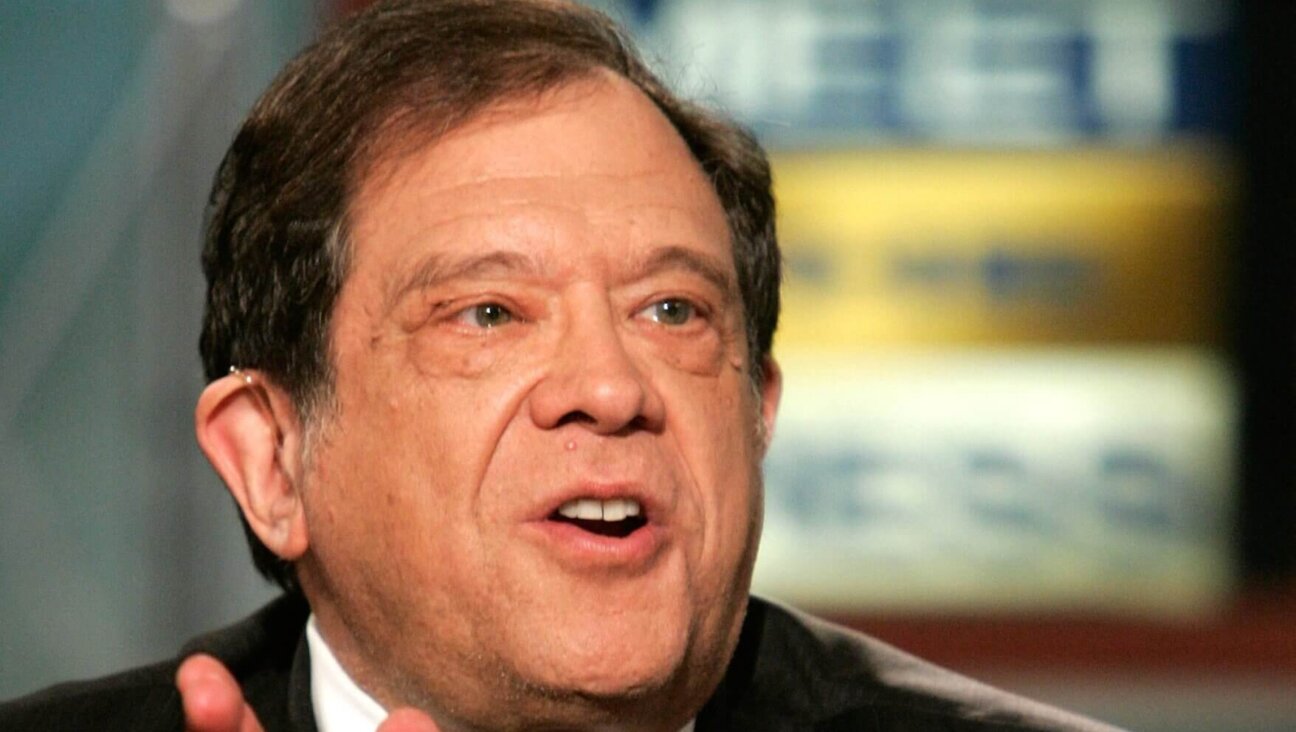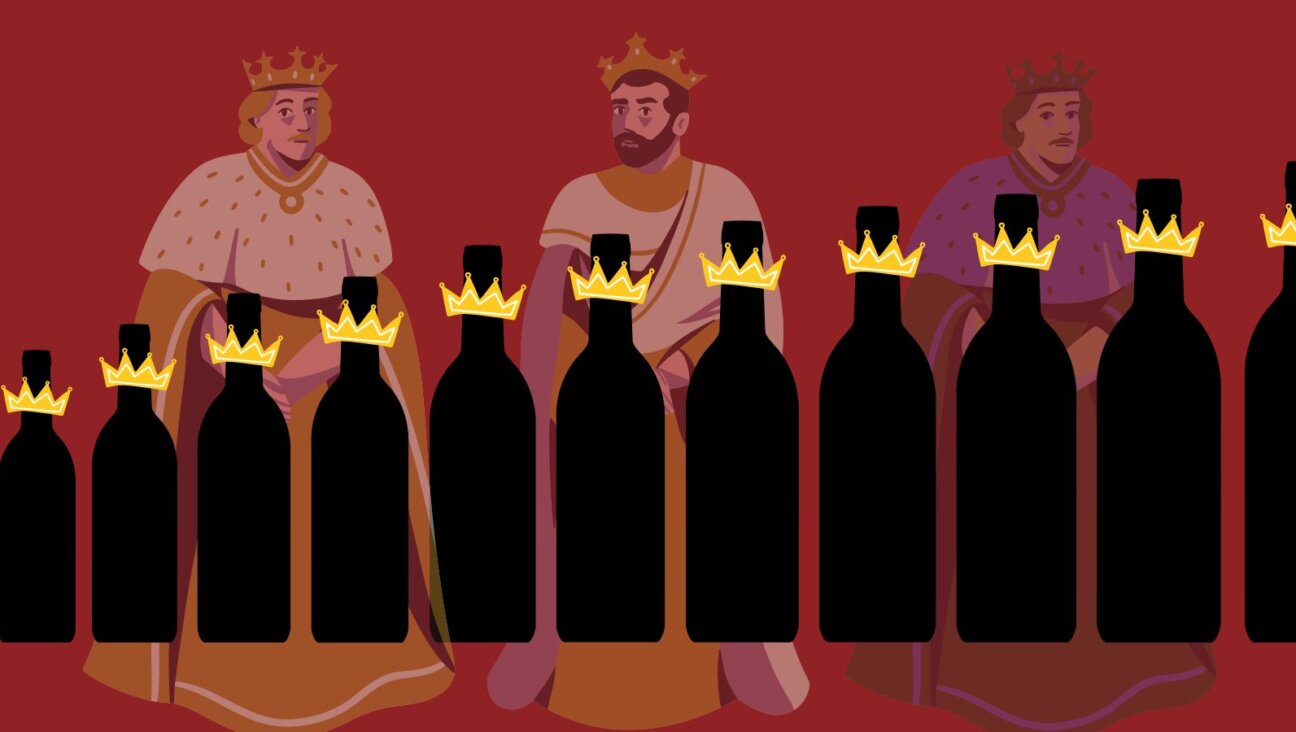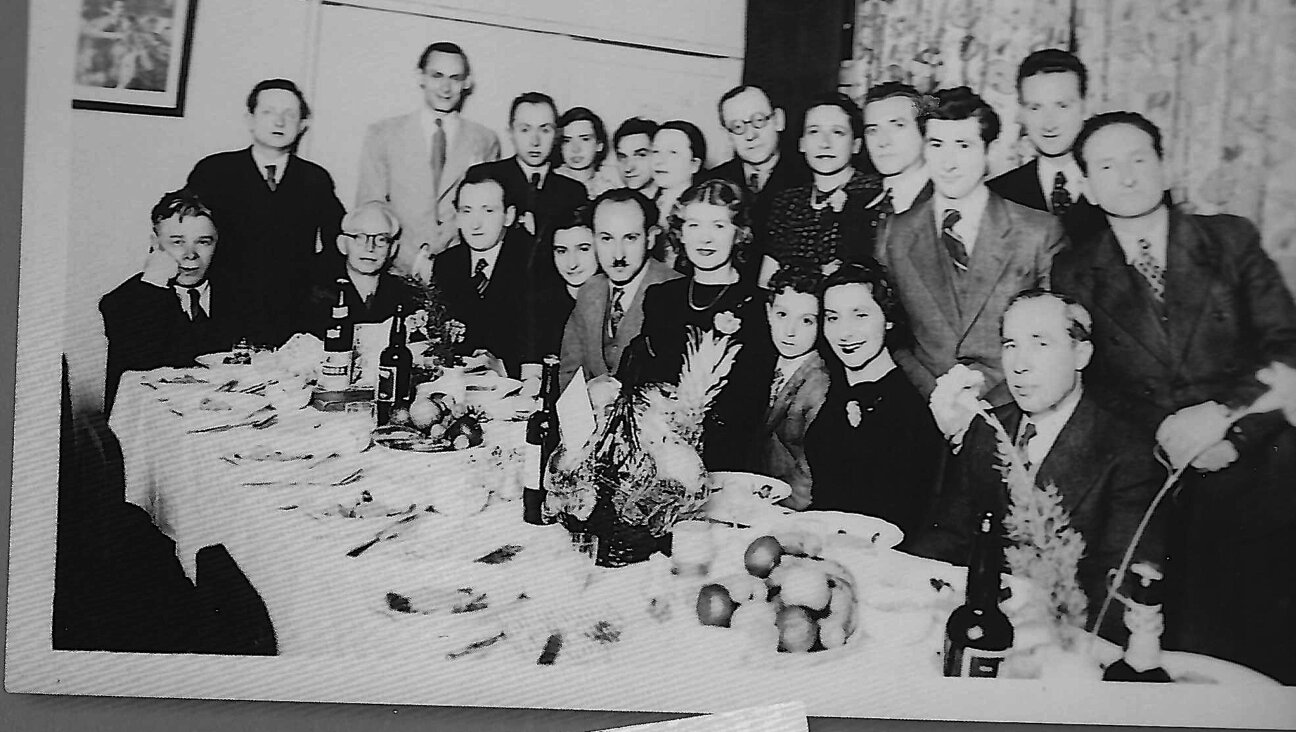How I Learned To Stop Worrying and Love Vladimir Jabotinsky

Dr. Strangelove? Vladimir Ze’ev Jabotinsky was a controversial but multitalented political personality. Image by Yale University Press
Jabotinsky: A Life
By Hillel Halkin
Yale University Press, 256 pages, $25
Hillel Halkin’s new biography, “Jabotinsky: A Life,” features as its frontispiece a 1918 photograph of the activist and author in his British military uniform. It’s an excellent choice of illustration that captures several of the paradoxes of his character. The baby-faced infantry officer stares out at the camera with sad eyes framed by an intellectual’s round glasses. His chest puffs proudly beneath his wool tunic, yet it’s clear that he is rather slope-shouldered. The uniform may fit, but it doesn’t suit him. His hands — one bare, the other sheathed in a black leather glove — hold what appears to be a riding crop. He looks as if he might at any moment either drop his switch to wipe tears from his eyes, or give a stiff-armed Dr. Strangelove-like salute with his gloved hand.
Vladimir Jabotinsky often puts me in mind of the unhinged movie character whose left side is overwhelmed by the stranglehold of his right. Like Strangelove, Jabotinsky had a nasal, Russian-accented voice — at least when he spoke Hebrew. He too was brilliant and impatient, loathed communism, promulgated doomsday scenarios, refused to be bound by political hierarchies, insisted on the power of deterrence, and wore an icy mask of regret when it came to the loss of innocent life. But let me make it clear that Jabotinksy was no comic figure, though he did possess a good sense of humor himself. Nor do I think he was a Hitlerian in disguise. In fact, I harbor a strange love for Jabotinsky.
Jabotinsky was a multi-talented Jewish political activist whose trajectory took him from czarist Odessa to the drawing rooms of power in London, and from there to the front lines of World War I. Later, he found himself in prison in British Mandate Palestine. He was an early champion of Zionism who later emerged as a bitter antagonist of the movement’s mainstream. He was an erudite journalist, a lawyer, a soldier, a publicist, a diplomat without portfolio, a publisher, a talented author and a gifted translator. Jabotinsky became a symbol of Jewish self-respect, self-defense and self-determination a century ago. But, as Halkin reveals, he could also be self-deluded and his actions could be self-defeating. He was by turns prophetic and obtuse, stubborn and irresolute, mannered yet impatient with formalities. An illiberal liberal and unpopular populist, his maverick — some might say incoherent — politics combined elements of anarchism, democracy, socialism and fascism. Halkin misidentifies the hodgepodge of Jabotinsky’s thought as a lack of ideology. In a fanciful epilogue, Halkin imagines conversing with his subject, who claims: “I was the least ideological of all Zionists.” Historians would likely disagree. Jabotinsky did not lack for ideology; he suffered from its tangled abundance.
If there is any maxim that can be said to characterize Jabotinsky’s erratic thought it would have to be the frustrated outburst he directed at the elder statesmen of the 1905 Seventh Zionist Congress: “Politics is power.” Not exactly a revelatory observation, perhaps, but indicative of the headstrong attitude that made Jabotinsky a legend in his lifetime and his name synonymous with a Jewish nationalist will to power. However, as Halkin astutely observes, Jabotinsky never possessed the power necessary to bring his political programs and grandiose schemes to fruition.
Today those familiar with Zionist history know that Jabotinsky was a territorial maximalist who demanded that a Jewish state arise on both sides of the Jordan River. Every town in Israel has a street named for him, and his severe visage has adorned stamps, medallions, currency, T-shirts, graffiti and sidewalk cafes. Yet he lived in the Yishuv for fewer than five years. Even then, Halkin makes clear, the cosmopolitan Jabotinsky never reconciled himself to the landscape or society of the nascent state. Language and territory were always the two essentials in his vision of Jewish nationalism, but he was far from having a romantic attachment to either. Jabotinsky went so far as to suggest latinizing Hebrew characters, and Tel Aviv, where the Jabotinsky Institute stands today, put him in mind of “vanished hopes.” Halkin describes how Jabotinsky was in fact secretly pleased to have been banned by the British in 1930 from returning to Palestine. That a cult of personality developed around so conflicted a figure remains remarkable. I suspect that Halkin’s admiration for his subject stems in part from the riddle of the Revisionist leader’s charisma.
Jabotinsky was undeniably charismatic. Even political enemies like David Ben-Gurion came away impressed with his intelligence, sincerity and personal charm. He was one of the most ingenious and tireless of many ingenious and tireless Zionist leaders. He inspired men with his fiery rhetoric, drew adoring women to his side, and captivated loyal followers the world over. Such a complicated persona resists the kind of compact narrative arc that biography often compels. Perhaps for this reason, previous biographies of Jabotinsky have been multi-volume affairs. Halkin’s book, though not nearly as detailed as exhaustive works by Joseph Schechtman (“The Vladimir Jabotinsky Story”) and Shmuel Katz (“Lone Wolf”), offers readers an economical account of Jabotinsky’s life and thought. This slim, well-written volume will no doubt encourage general audiences to develop a nuanced view of Jabotinsky that exceeds the caricature.
Though the man has been dead for nearly three quarters of a century, the myths of Jabotinsky remain as polarizing today as ever. Those affiliated with Israel’s right remember him as a Cassandra figure whose premonitions of Jewish catastrophe in Europe were ignored by an ineffectual Jewish establishment. For many on Israel’s left, he remains a bogeyman, an autocrat who condoned terror and a militarist with a thirst for blood. To the right, Jabotinsky offers an object lesson on the perils of Jewish vulnerability; to the left, a brief against unbridled force. Both views are reductive, as Halkin demonstrates. Unfortunately, Halkin refrains from engaging with Jabotinsky’s relevance to contemporary Israel’s political scene.
Like Theodor Herzl, Jabotinsky is more often quoted than read in Israel today. Halkin accords Jabotinsky the respect he deserves by reading his literary and polemical works closely. In Halkin, readers will encounter Jabotinsky the playwright and poet, though his talents in these areas are questionable. Jabotinsky’s novels “Samson the Nazarite” and “The Five” better expose his literary gifts. Halkin praises both works, reading the former — a biblical page-turner — as an allegory for the situation in Mandate Palestine. The latter he treats as a window into Jabotinsky’s life and psyche. Here Halkin misses an opportunity to develop a discussion of the fascinating overlap between creative writers and Zionist activists. In Revisionist circles alone the list includes such renowned figures as poet Uri Zvi Greenberg, screenwriter Ben Hecht, and novelist Arthur Koestler.
A respected translator himself, Halkin takes special care to describe Jabotinsky’s famed renderings of Edgar Allan Poe’s “Annabel Lee” and “The Raven” into Hebrew, and of Chaim Nachman Bialik’s “In the City of Slaughter” into Russian. Bialik’s castigation of powerlessness and cowardice during the Kishinev pogroms played an important role in advancing Jewish nationalist sentiments. But Halkin reminds us that in fact it was Jabotinsky’s translation of the great Hebrew poem that reached a much larger audience and that galvanized Russian audiences.
Halkin accomplishes a clever rendering of Jabotinsky’s life for those unable to access Jabotinsky’s untranslated autobiography and daunted by the prospect of longer tomes. “Jabotinsky: A Life” presents the lone wolf’s contradictions, his stormy personality and personal warmth, his dreams and his failures with clarity and verve. Partisans will surely be pleased that Halkin grants a new generation access to a generally positive view of their hero. Those suspicious of Jabotinsky’s legacy will also benefit from Halkin’s portrait of a complex individual whose character — if not his achievements — dwarfs those who have since claimed his mantle, including former Prime Minister Menachem Begin and Prime Minister Benjamin Netanyahu. Readers may not come to love Jabotinsky, but at least Halkin’s biography may help them lose a bit of their fear.
Adam Rovner is associate professor of English and Jewish Literature at the University of Denver. He is author of the forthcoming “In the Shadow of Zion: Promised Lands before Israel” (NYU).

I hope you appreciated this article. Before you go, I’d like to ask you to please support the Forward’s award-winning journalism this Passover.
In this age of misinformation, our work is needed like never before. We report on the news that matters most to American Jews, driven by truth, not ideology.
At a time when newsrooms are closing or cutting back, the Forward has removed its paywall. That means for the first time in our 126-year history, Forward journalism is free to everyone, everywhere. With an ongoing war, rising antisemitism, and a flood of disinformation that may affect the upcoming election, we believe that free and open access to Jewish journalism is imperative.
Readers like you make it all possible. Right now, we’re in the middle of our Passover Pledge Drive and we need 500 people to step up and make a gift to sustain our trustworthy, independent journalism.
Make a gift of any size and become a Forward member today. You’ll support our mission to tell the American Jewish story fully and fairly.
— Rachel Fishman Feddersen, Publisher and CEO
Join our mission to tell the Jewish story fully and fairly.
Our Goal: 500 gifts during our Passover Pledge Drive!
























